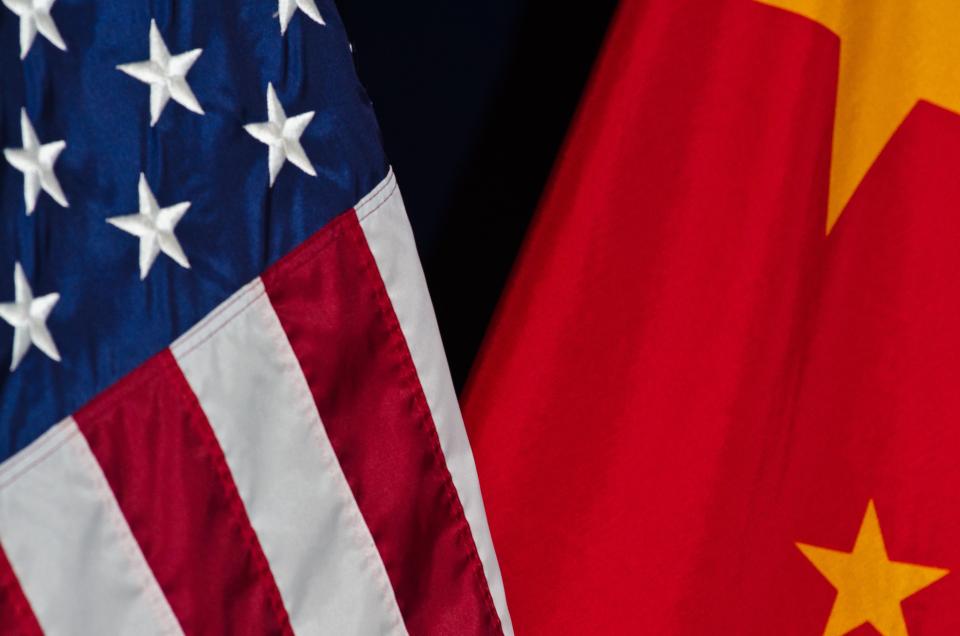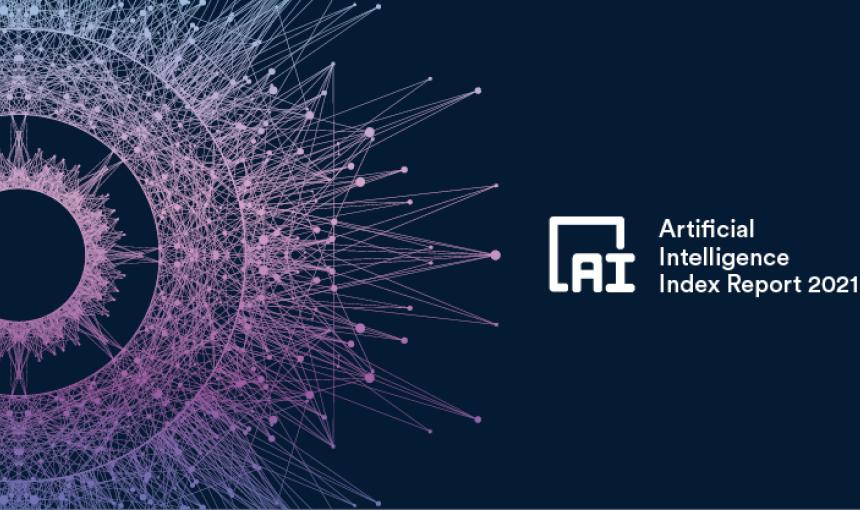AI Report: Competition Grows Between China and the U.S.

USDA
The new AI Index notes that China and the U.S. have become peer nations when it comes to the study of AI.
When it comes to AI prowess, the United States and China have emerged as global leaders.
Both have invested billions of dollars in AI technology, lead in research and education, and have adopted national AI strategic plans. China announced its intention to become the world’s primary AI innovation center by 2030, which would mean unseating the U.S. from its long-held top position.
“Some people call AI the driving force of a fourth industrial revolution, and it certainly is important in technological competition between the U.S. and China,” says HAI predoctoral fellow Jeffrey Ding, who’s completing his PhD at Oxford on past technological revolutions.
So where do these countries stand in this technology competition?
The Stanford Institute for Human-Centered AI (HAI) recently released its 2021 AI Index, an annual study of global AI impact and progress built by an interdisciplinary team from industry and academia. The report examines key areas — scholarly research, investment, and tech talent — to find these AI superpowers are more and more becoming peers.
China’s Growing Scholarly Impact
Since 2017, China has produced more AI scholarly research than the U.S. But in 2020, for the first time, China passed the U.S. in share of AI-related journal citations.
“Citations measure whether the ideas you’re putting out are novel and have impact — not just that you have a lot of researchers pumping out publications,” says Michael Sellitto, HAI deputy director and a member of the AI Index steering committee. “The data suggests that China is making more contributions to basic AI knowledge now, a qualitative improvement.”
The U.S. still leads China on the number of AI conference papers, and these are more heavily cited than China’s conference papers. So the research story is “not entirely clear,” Sellitto notes.
Who generates published research is another important area. In both the U.S. and China, the highest percentage of peer-reviewed AI publications is driven by academic institutions. But in the U.S., the second-most productive publication source is corporations (19.2 percent of total publications), and in China, that designation goes to the government (15.6 percent).
“Big U.S. tech companies are making massive investments and acquiring as much AI talent as they can, and they’re able to pay higher salaries than public-sector or academic organizations,” Sellitto says. “It will be interesting to see if that moves the research toward more commercial AI technologies.”
U.S. Still Draws the Talent — For Now
AI advances depend on AI talent. “It’s probably the biggest bottleneck to widespread adoption of AI advances,” Ding says.
For decades the U.S. has been a magnet for global talent in AI and generally in tech and innovation, attracting the best from around the world. The estimated hiring rate for AI workers in the U.S. in 2020 was about double the rate in 2016, when the U.S. already had a strong volume of such hires. China’s growth rate, by comparison, was only about 30 percent over that same period.
Similarly, the U.S. shows strong penetration of AI-related skills across fields. The country is currently second only to India in average penetration of AI skills across occupations (based on the average share AI skills represent within a given occupation), at nearly two times the global average penetration rate. But China is close behind, at 1.4 times the global average.
But the U.S.’s dominance in AI talent is likely shifting, says Sellitto: “It’s becoming harder for recent tech-focused graduates to stay in the U.S. due to visa challenges or feeling the environment here is less welcoming.”
While the AI Index shows that 80 percent of recent AI PhD graduates continue to remain in the U.S., countries like Canada with streamlined work/immigration pathways for high-skilled tech workers are attracting more talent that might have otherwise stayed in their country of graduation. “Many of them are still working for U.S. companies with offices abroad,” Sellitto says. “But long term, the talent competition may become a liability for the U.S. if the drivers of these trends are not addressed by Washington.”
U.S. Remains a Funding Powerhouse
On the funding front, the U.S. remains the largest destination for private AI-focused funding (over $23 billion in 2020), more than double that associated with China ($9.9 billion).
But U.S.-government investment in basic research has declined since the Cold War, Sellitto points out: “Businesses focus on commercial technology. But we need to fund longer-term, more speculative research to power major leaps. If we don’t, we’re ceding the innovation edge over time to countries like China, which has huge amounts of public investment going into AI research and development.”
R&D will go only so far, though, notes Ding: “There’s a tendency to only consider R&D spending when thinking about a country’s AI capabilities. But that’s just the first part of the pipeline: who can generate the novel AI advance. With all the open-source research available, we should also focus on who can adapt new advances across all the different potential applications. That means building more connections between organizations doing fundamental research, those doing more applied development work, and those that build and distribute AI applications.”
Reframing the ”Race”
Overall, viewing AI development as a zero-sum race may miss key parts of the picture.
There are certainly dimensions of the AI space where the race analogy holds true. “AI could disrupt the current balance of military power,” Ding says. “Only one country can be more ahead on this dimension.” Similarly, there are markets where only one winner or a handful of them is likely to emerge, like autonomous vehicles, Ding adds.
But there are also many cases where collaboration is critical. “If both the U.S. and China invest in areas that make sense for their economies, and trade helps lift both countries up, that’s a good thing,” Ding says. He offers the example that China may have an advantage in data-labeling services for machine learning and can sell data sets to U.S. companies to build better algorithms for mutual benefit.
In addition, there are areas the U.S. shouldn’t want to lead — Sellitto notes China’s increasing focus on AI technology for surveillance, including through its global Digital Silk Road initiative. “That technology isn’t going to help you improve education or address climate change or health care issues,” Sellitto says.
Instead, all countries should collaborate on AI for global good through the lens of human rights, such as the recent lightning-fast, AI-based advancements in COVID tracking and vaccine/drug development. “There are global challenges where we’re all going to either suffer the consequences of something going wrong or benefit if we can create better solutions,” Sellitto says.
The 2020 launch of the Organization for Economic Cooperation and Development’s (OECD) AI Policy Observatory, which works across OECD country members and partners to analyze AI-related policy areas, and the Global Partnership on AI (started by Canada and France to bridge theory and practice through cutting-edge AI research and application) suggests growing movement in this direction. “We’re really starting to see a constellation of more democratic countries coming together to shape the principles and values that are embedded into AI technology and to counter digital authoritarianism,” Sellitto says.
Stanford HAI's mission is to advance AI research, education, policy and practice to improve the human condition. Learn more.


